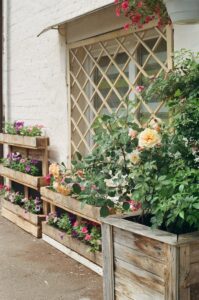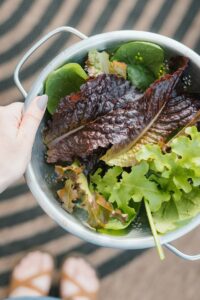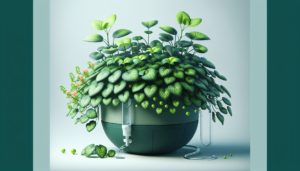In the world of gardening, an art form combines creativity and resourcefulness – frugal gardening. Discover the secrets of this ingenious practice as we explore how to achieve a lush and thriving garden while being mindful of our budget. From repurposing everyday items to exploring low-cost gardening techniques, join us on a journey where sustainability meets beauty, and where being economical doesn’t mean compromising on the splendor of nature.
Choosing the Right Plants
Consider Perennial Plants
Regarding frugal gardening, perennial plants are an innovative and cost-effective choice. Perennial plants live for multiple years, as opposed to annuals, which only last one season. By planting perennials, you can enjoy their beauty year after year without spending money on new plants every season.
Not only do perennial plants save you money in the long run, but they also require less maintenance and provide stability to your garden. These plants establish more robust root systems over time, making them more resistant to drought and other adverse conditions. Popular perennial plants include lavender, daylilies, and coneflowers.
Opt for Native Plants
Another great way to save money in your garden is by choosing native plants. Native plants naturally occur in your region and are adapted to the climate, soil, and other conditions in your area. Because of this, they require less water, fertilizer, and overall maintenance than non-native plants. This translates to significant cost savings in the long run.
Native plants also provide important habitats for local wildlife, as they have evolved alongside them. By planting native species, you can attract birds, butterflies, and other beneficial insects to your garden, creating a more balanced and sustainable ecosystem.
Choose Disease-Resistant Varieties
Dealing with plant diseases can be frustrating and costly. To minimize the risk of diseases in your garden, opting for disease-resistant plant varieties is a wise choice. These plants are bred to resist common diseases naturally, reducing the need for chemical interventions and saving you money on pesticides and fungicides.
When selecting plants, look for varieties labeled as disease-resistant or tolerant to common diseases in your area. Research, ask for recommendations at local nurseries, or consult gardening communities to determine which varieties are known for their disease resistance. Choosing the right plants can prevent diseases before they become a problem in your garden.
Starting from Seeds
Save Seeds from Previous Harvest
One of the easiest and most cost-effective ways to start your garden is by saving seeds from the previous harvest. When you save seeds, you create a continuous cycle of free plants. Choose healthy, mature seeds from your most robust plants and store them in a dry and cool place until the next planting season.
Saving seeds saves you money and allows you to select plants that have adapted to your specific growing conditions over time. This can result in more robust and resilient crops and unique varieties well-suited to your garden.
Trade Seeds with Other Gardeners
Another great way to acquire a variety of seeds at no cost is by trading with other gardeners. Many gardening communities organize seed swaps or have online platforms where gardeners can exchange seeds. By trading seeds, you can expand your plant selection and try new varieties without spending money.
Engaging in seed swapping saves you money, fosters a sense of community, and allows you to connect with fellow gardeners who share your passion. It’s a win-win situation: You get free seeds and the opportunity to share your garden’s abundance with others.
Buy Seeds in Bulk
Buying seeds in bulk can be a cost-effective option if you cannot save seeds or find suitable trades. Buying in bulk allows you to get more seeds for your money, as the price per seed is often significantly lower when purchased in larger quantities.
Before buying seeds in bulk, consider their shelf life and whether you’ll be able to use them all before they expire. Also, research and choose reputable seed suppliers to ensure the quality and viability of your purchased seeds.
Creating Homemade Fertilizers
Compost
Compost is often called “black gold” in the gardening world and for a good reason. It’s a fantastic homemade fertilizer that enriches the soil with organic matter, nutrients, and beneficial microorganisms. You can nourish your garden by creating compost without spending money on store-bought fertilizers.
To make compost, start by collecting kitchen scraps, such as fruit and vegetable peels, coffee grounds, and eggshells. Combine them with yard waste like grass clippings, leaves, and small branches. Layer the materials in a compost bin or pile, balancing green (nitrogen-rich) and brown (carbon-rich) materials. Turn the compost regularly to promote decomposition, and in a few months, you’ll have nutrient-rich compost ready to use in your garden.
Mulching with Organic Material
Mulching is an excellent gardening practice that conserves soil moisture, suppresses weeds, moderates soil temperature, and improves soil health. Organic materials can also be used as mulch, providing slow-release nutrients to your plants and reducing the need for additional fertilizers.
Materials such as straw, wood chips, grass clippings, and shredded leaves are ideal for mulching. Spread a layer of mulch around your plants, ensuring not to cover the stems or trunks. As the mulch breaks down over time, it will release essential nutrients into the soil, promoting healthy plant growth and reducing the need for costly fertilizers.
Utilizing Kitchen Scraps
Don’t overlook the potential of your kitchen scraps to provide free nutrients for your garden. Instead of throwing away vegetable peels, coffee grounds, and tea leaves, repurpose them as homemade fertilizers. These items are rich in nutrients that can benefit your plants.
Consider creating a compost tea or using it directly in your soil to utilize kitchen scraps. Compost tea steers your kitchen scraps in water for a few days, making a nutrient-rich liquid fertilizer. It can be applied directly to the soil or as a foliar spray. Alternatively, you can bury your kitchen scraps directly into the soil, allowing them to slowly decompose and release their nutrients.
DIY Potting Soil Mix
Measure the Ingredients
Creating your potting soil mix allows you to save money and tailor the mix to suit the specific needs of your plants. To make a DIY potting soil mix, measure the ingredients.



